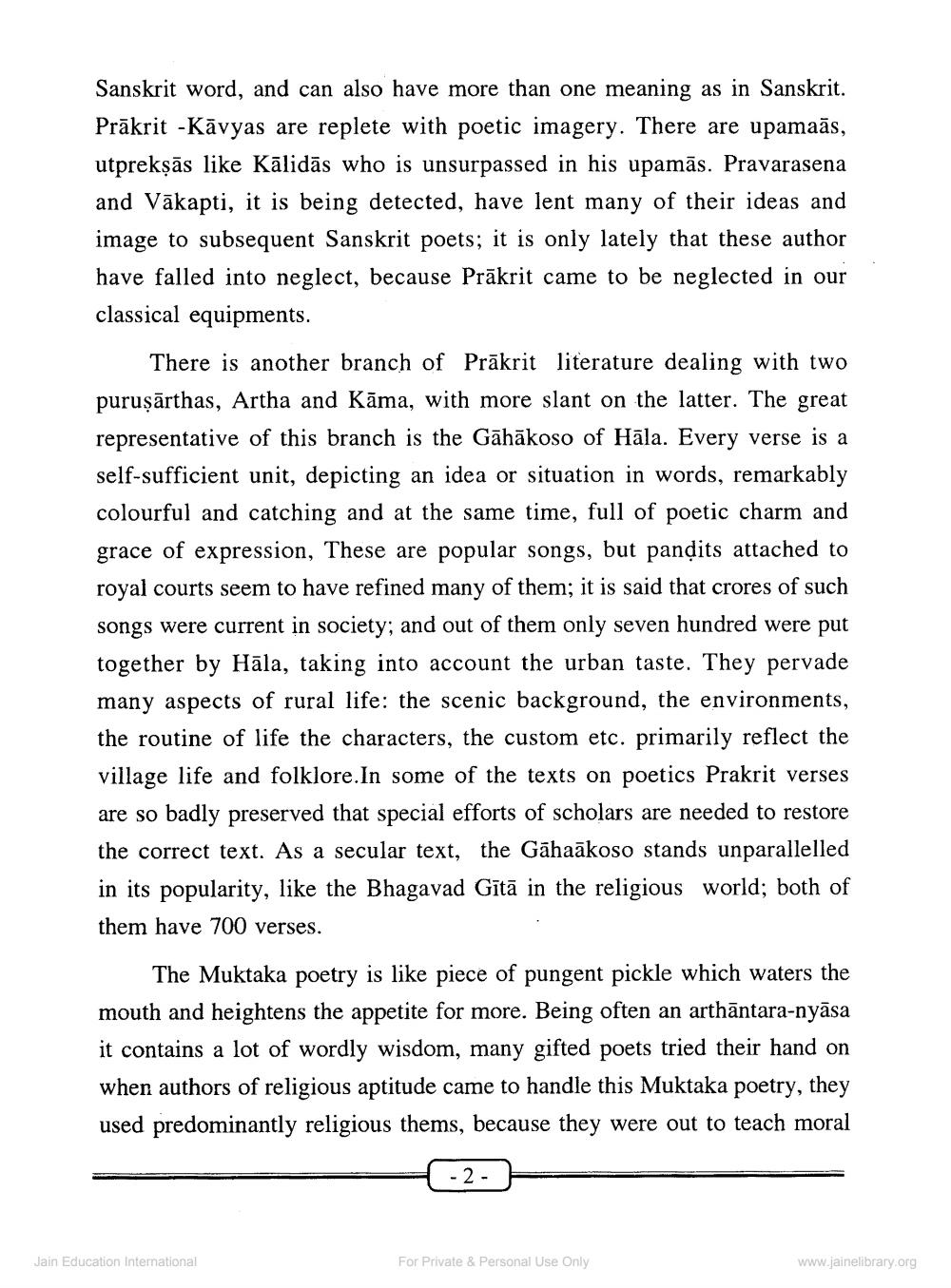________________
Sanskrit word, and can also have more than one meaning as in Sanskrit. Prākrit - Kāvyas are replete with poetic imagery. There are upamaās, utprekṣās like Kālidās who is unsurpassed in his upamās. Pravarasena and Vākapti, it is being detected, have lent many of their ideas and image to subsequent Sanskrit poets; it is only lately that these author have falled into neglect, because Prākrit came to be neglected in our
classical equipments.
There is another branch of Prākrit literature dealing with two puruṣārthas, Artha and Kāma, with more slant on the latter. The great representative of this branch is the Gāhākoso of Hāla. Every verse is a self-sufficient unit, depicting an idea or situation in words, remarkably colourful and catching and at the same time, full of poetic charm and grace of expression, These are popular songs, but pandits attached to royal courts seem to have refined many of them; it is said that crores of such songs were current in society; and out of them only seven hundred were put together by Hāla, taking into account the urban taste. They pervade many aspects of rural life: the scenic background, the environments, the routine of life the characters, the custom etc. primarily reflect the village life and folklore. In some of the texts on poetics Prakrit verses are so badly preserved that special efforts of scholars are needed to restore the correct text. As a secular text, the Gāhaākoso stands unparallelled in its popularity, like the Bhagavad Gītā in the religious world; both of them have 700 verses.
The Muktaka poetry is like piece of pungent pickle which waters the mouth and heightens the appetite for more. Being often an arthāntara-nyāsa it contains a lot of wordly wisdom, many gifted poets tried their hand on when authors of religious aptitude came to handle this Muktaka poetry, they used predominantly religious thems, because they were out to teach moral
-2
Jain Education International
For Private & Personal Use Only
www.jainelibrary.org




